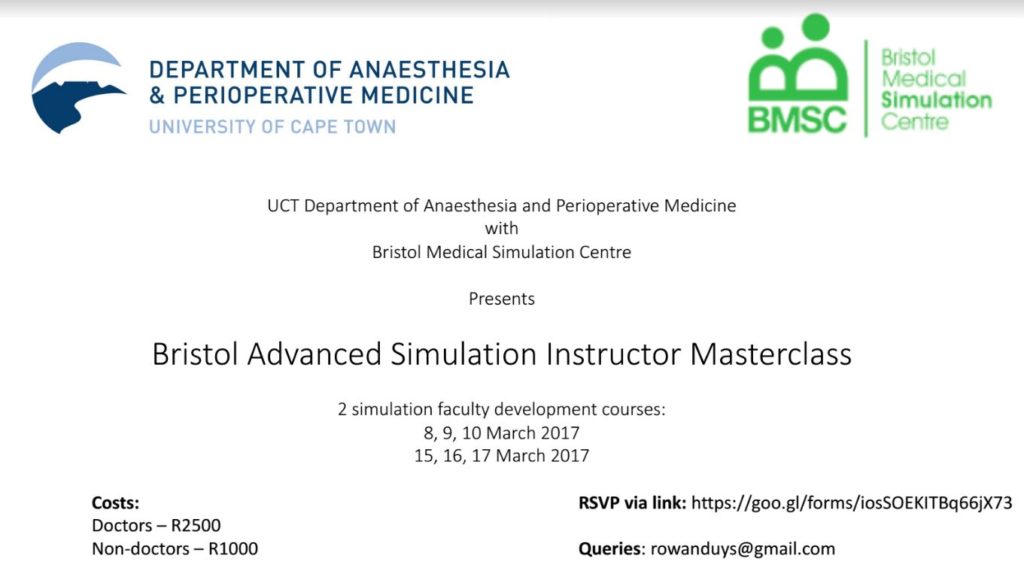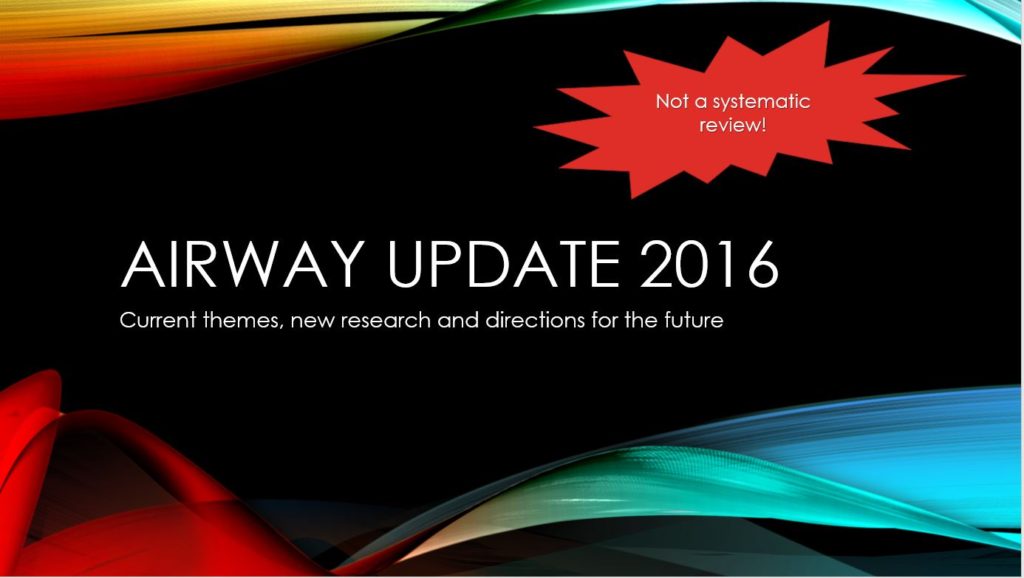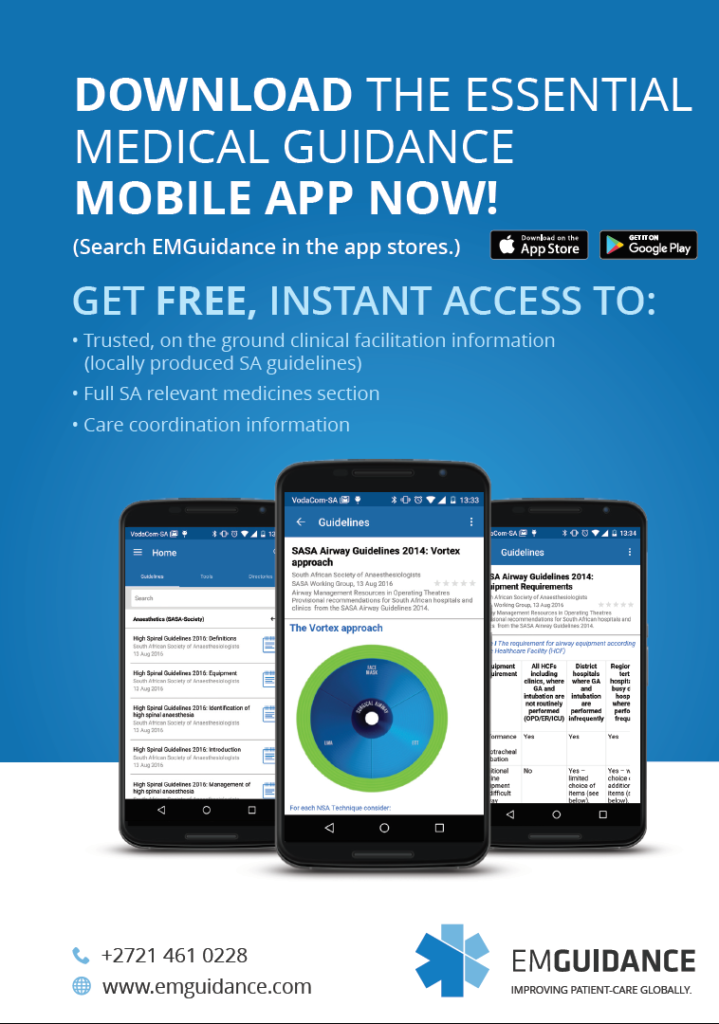As promised, my presentation from the 9th National Assembly on Paediatric Emergency Medicine currently being held at the Apollo Institute of Medical Sciences & Research in Hyderabad, India. There is much more content in the audio, which I will try to add to the post later when it is available.Thoughts? Comments? Post them below!
All posts by Ross Hofmeyr
NAPEM’17: Paediatric Difficult Airway in the ED
As promised/per usual, here’s my presentation from the current National Assembly on Paediatric Emergency Medicine, being held now (16-19 Feb 2017) at the Apollo Institute of Medical Sciences & Research, Hyderabad, India. Much of the content is in the audio, of course…which I will post if/when available.
Comments welcome below as usual!
Understanding airway geometry: Brainchildren of Dr Kenneth Greenland
One of the greatest influences on my understanding of the geometry of the airways, and thereby the technical skills and processes required to place airway devices of all types, has been the work on publications of Dr Kenneth Greenland. Greenland’s publication in the BJA in 2010 should be required reading for anybody who performs intubation. However, if you want to really understand theories of the airway curves and columns, I highly recommend getting it from the horses mouth. Here below are several videos in which can Greenland explains his thinking and theories. While they are a little longer than your average #FOAM material, I cannot recommend them strongly enough.
https://www.youtube.com/watch?v=VAhmohUI9R8
https://www.youtube.com/watch?v=p2Xcm7csV5w
Bristol Advanced Simulation Instructor Masterclass (BASIM) in Cape Town
Although not an airway course, we have been greatly influenced by the methods used in BASIM for creating and undertaking airway simulations. Highly recommended course presented by the master Dr David Grant himself.
More information about the course can be found on the BMSC site here. To register for the workshops in Cape Town in March 2017, click this link.
Algorithms page updated
It’s always a challenge to stay up to date in the field of airway management, but we do try. The recently published All Indian Difficult Airway Association Guidelines (just released in the December 2016 edition of IJA) have been added to our Algorithms page, as well as an update of the Vortex 2 video and revised links to the Resuscitation Council of South Africa algorithms. If you spot missing algorithms or broken links, please comment!
FCA2 Airway Update Dec’16
A short presentation on a selection of airway themes and some of the papers from 2016 for our FCA Part 2 candidates. Definitely not intended to be a systematic or exhaustive review! Click the image to download a PDF of the slides, or the link below for the resources.
You can watch a 9-minute video of the slides and attendant video clips below. Please note that this is not narrated.
VLVids: Room for Improvement!
This real-life videolaryngoscopy example (RSI of a patient with a head injury for craniectomy) shows some commom errors, and room for improvement. Three major areas that could be better to spot here:
- Less-than-ideal positioning of the VL blade. The tip is too deep (over the epiglottis, rather than in the vallecula), which reduces the available space to manipulate both VL and ETT, the field of vision, and the ability to perceive the approach of the ETT.
- Quick suctioning of the secretions/saliva/mucus would reduce the risk of losing the view or the patient aspirating.
- An introducer (stylet/bougie) would greatly assist passage of the ETT through the cords.
VLVids: Use an introducer!
A classic example of good videolaryngoscopy technique being thwarted by not always using an introducer (stylet or bougie). Note the clinician performing the intubation gets perfect, optimised VL view (Rule of 3), but then struggles to pass the ETT anteriorly enough, losing time. Although this was no problem for the well-oxygenated patient in this case (and the intubation is still under 45 seconds duration), in a critical case it can lead to desaturation, frustration, and possible intubation trauma.
Confined Space Airway Management
Ross’s talk from the 2015 SMACCdub meeting, with credit to #SMACC and the Intensive Care Network.
This and many other talks available on the SMACC home pages.
Click here for the slides, podcast and original abstract on ICN.
EMGuidance App
OpenAirway has been collaborating with the UCT Department of Anaesthesia & Perioperative Medicine and the Southern African Society of Anaesthesiologists to include anaesthesia guidelines and reference materials in the Essential Medical Guidance (EMGuidance) app. Although only currently targeted at South African medics, this free app is accessible to all registered medical practitioners, and includes georeferenced guidelines from around the country. The content is continually being updated, with some exciting new developments just around the corner.
Get the app on EMGuidance.com


